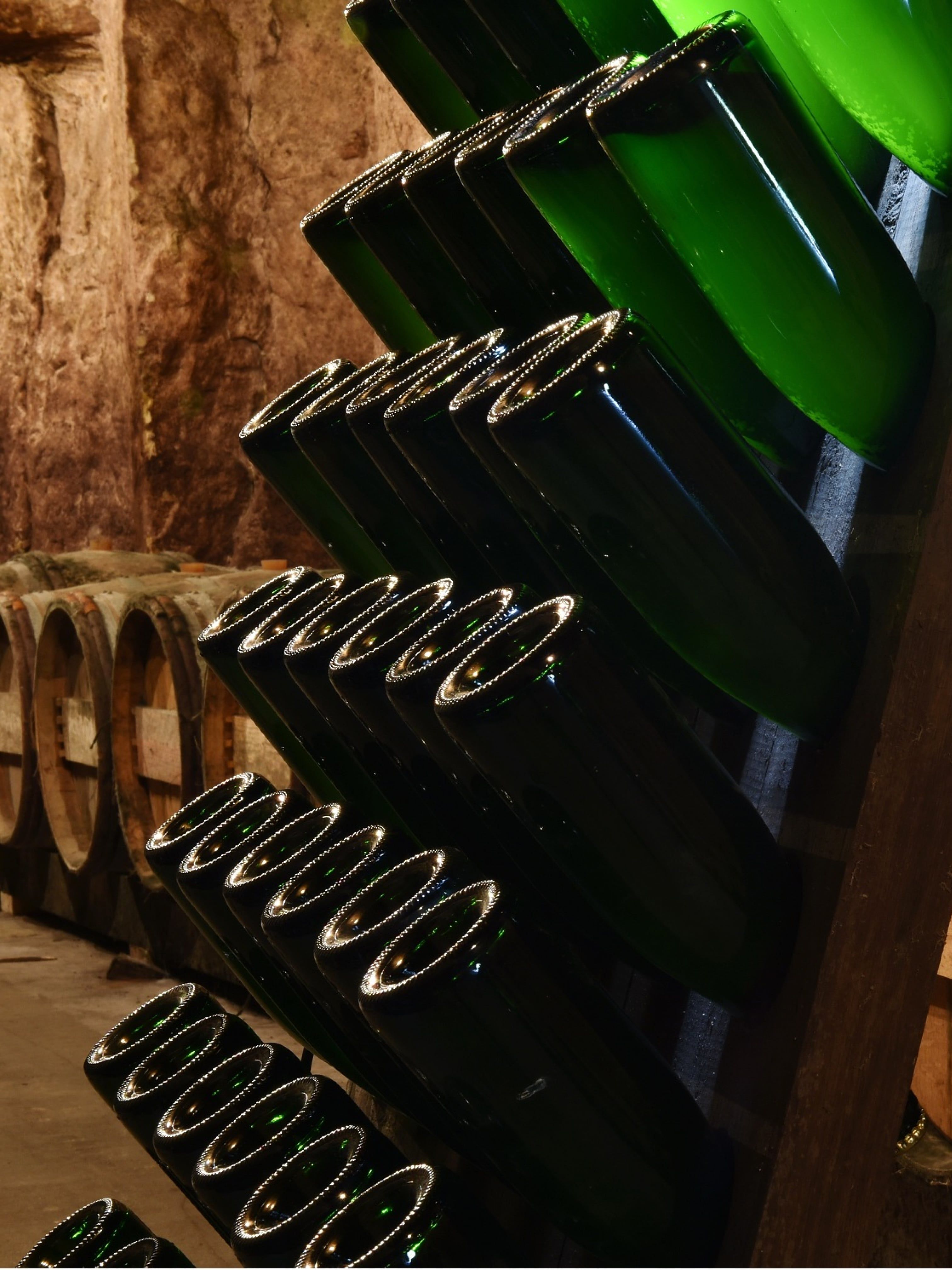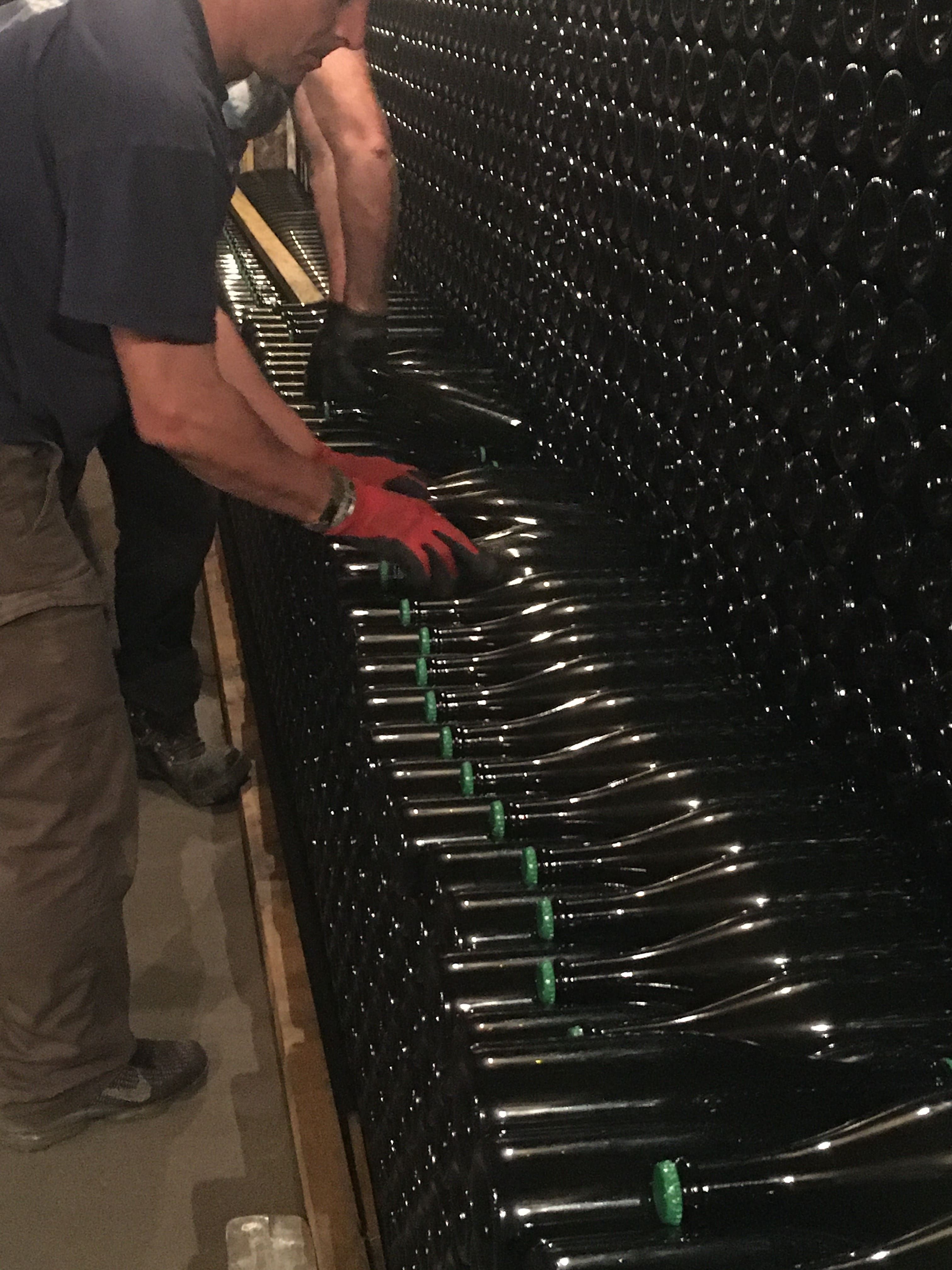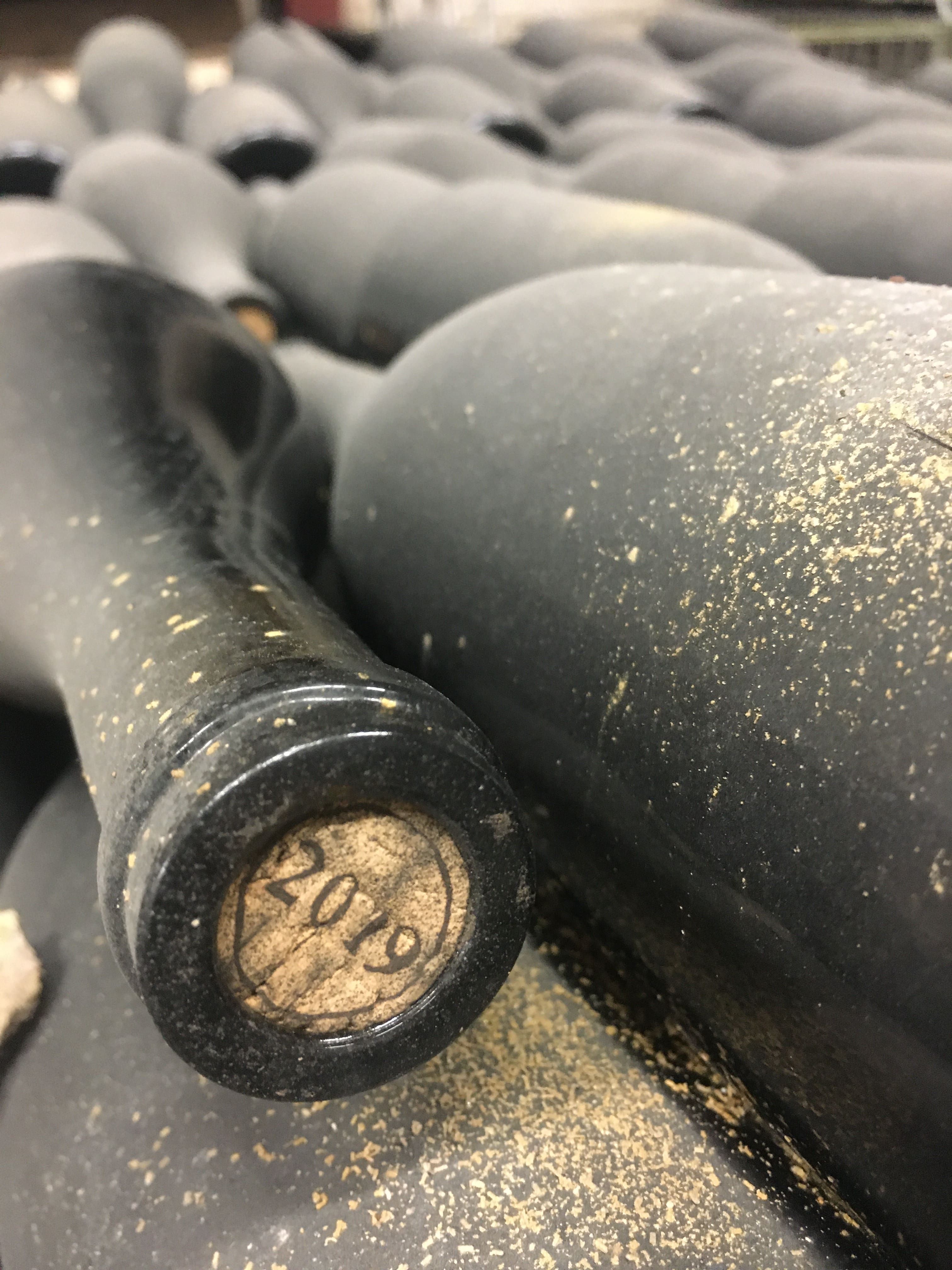OUR KNOW-HOW
WINEMAKING
We harvest at the beginning of October.
The harvest is carried out entirely using a pneumatic press (on this type of press we have a slow pressing program). The juices are selected, then decanted for 12 to 24 hours depending on their nature.

FERMENTATION
Then we move on to alcoholic fermentation which lasts about a month under controlled temperature which does not exceed 16°.
Once fermentation is complete, we carry out clarification (which consists of changing containers 2 to 3 times during the winter) to remove the lees.

VOUVRAY
SPARKLING
Around March comes the time for the second fermentation in bottles (according to the “Traditional Method”).
This involves taking the volume of the wine intended to be bottled in a large vat, and adding yeasts or ferments (from grape juice) to trigger the start of a second fermentation. Known as “foam intake”, it is this which creates the pressure in the bottle. We report a liqueur or preserves natural sugars from the first fermentation.
The filled bottle is capped and placed on slats for a minimum of 18 months in our cellars. To collect the deposit in the neck we carry out the bottle riddling operation. Then we move on to disgorging.
VOUVRAY
STILL
Whether dry, semi-dry or soft, depending on the year and especially depending on the sunshine, still Vouvray always retains the fragrant sap of its terroir.
Very flattering in its early youth, it acquires very rich aromas as it matures.
It does not “age”, it “ripens” in the heart of the vaults dug in the freestone. Aromas of ripe quince and acacia then develop in this fruity and easy-drinking beverage. It is a long-lasting wine which can, in very great vintages, become a century-old wine.
When autumn is favorable, the winegrower waits to harvest until the grapes have reached over-ripeness; they are then picked by successive sorting. This over-ripening gives sweet amber wines when young and tinged with gold after a few years. Serving temperature: 12°C.













